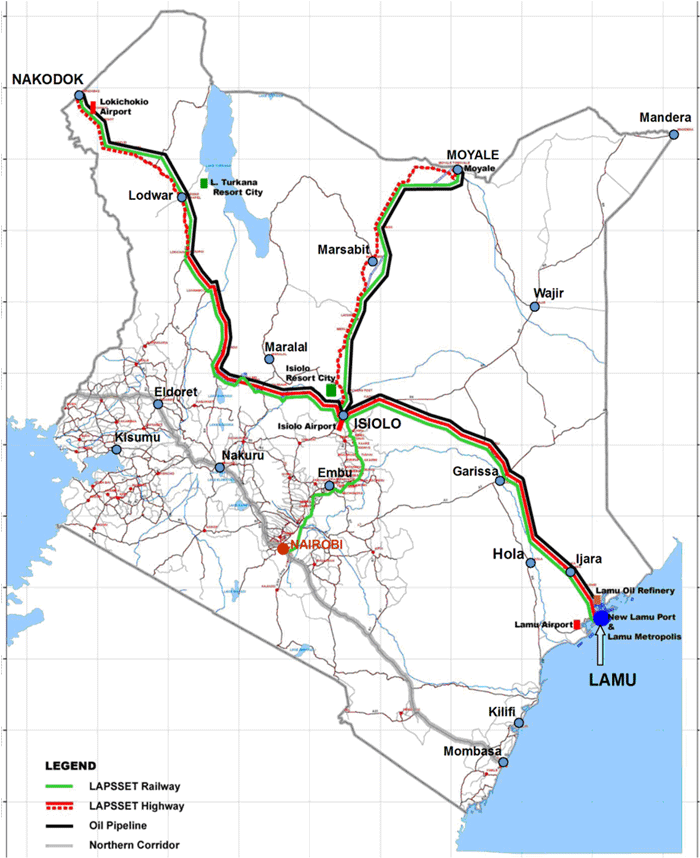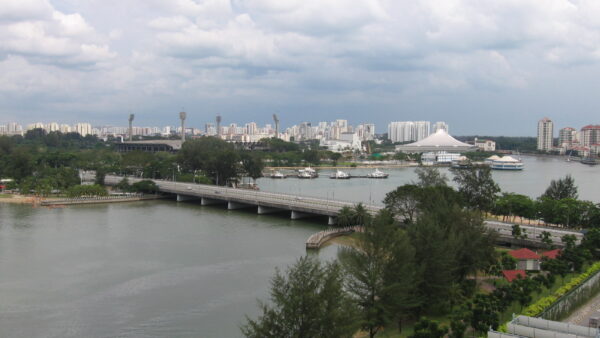One of Africa’s biggest infrastructure schemes, the $5bn Lamu Port in Kenya, has received an important boost in the form of a $1.93m grant to study the “bankability” of the proposed 32-berth facility for international investors.
If built, the port would be east Africa’s first transhipment hub after Durban in South Africa, and is the cornerstone of an ambitious plan to open a road, rail and pipeline corridor through northern Kenya to Ethiopia and South Sudan – known as the Lamu Port-South Sudan- Ethiopia Transport (LAPSSET) Corridor.

Map showing the scope of the LAPSSET Project within Kenya (Wikimedia Commons)
The $1.93m grant was made to Kenya’s LAPSSET Corridor Development Authority by a fund organised by the African Development Bank (AfDB) on 7 March.
It will help to revive hope in the grand LAPSSET plan, which was first inaugurated in March 2012, but has since struggled to make headway amid the collapse in the price of oil and resumption of conflict in South Sudan.
Work on the first three berths is ongoing, carried out by China Communication Construction Company in a $689m contract funded by the Kenyan government. The first of these is expected to begin operating next year.
To build the other 29 berths, Kenya will seek funding through public-private partnerships (PPPs). The grant is intended to help prepare the scheme for “bankability” to prepare it for investment by procuring transaction advisory services and related technical assistance.
The expected outcome of this work is a “Transaction Plan” mapping out project financing options, including defining the feasible transaction structure, project financing arrangement and scope as well as the project risks.
Organised by the AfDB with financial support from Canada, Germany, Spain, Denmark, and Norway, the fund is called the New Partnership for Africa’s Development Infrastructure Project Preparation Facility (NEPAD-IPPF).










